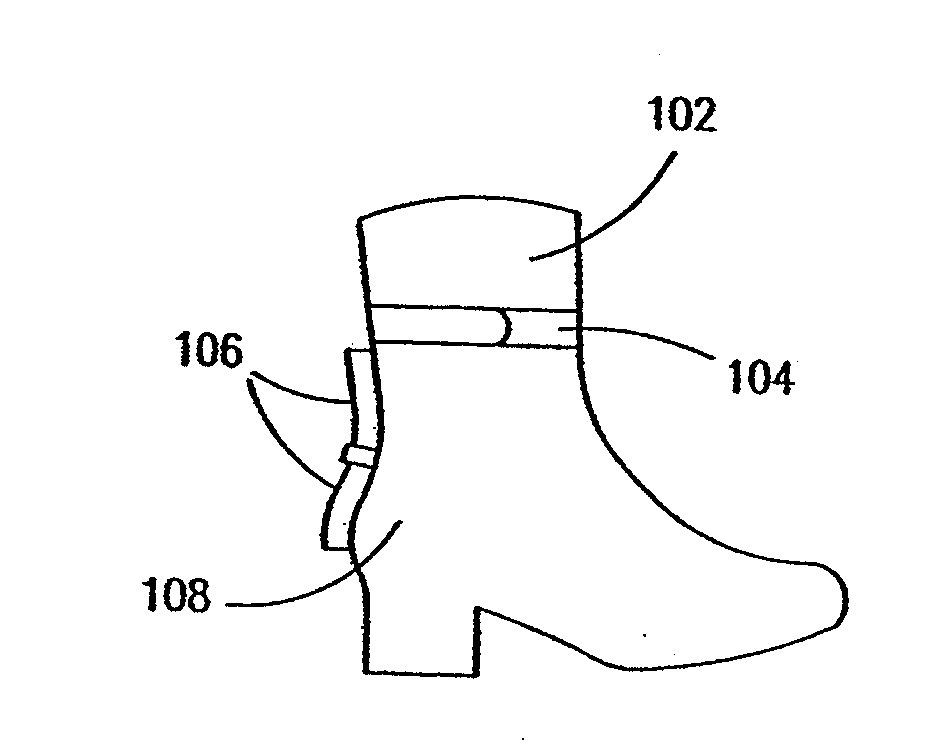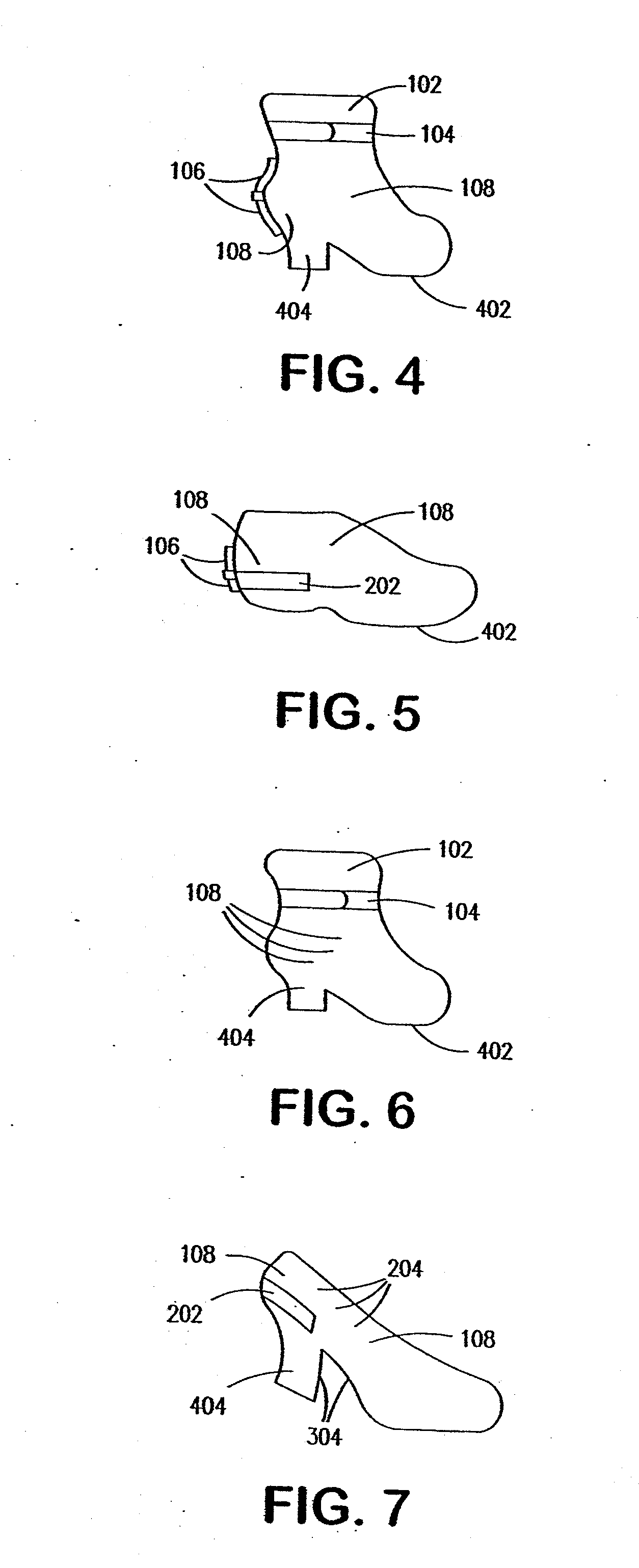Heel stabilizer
a technology of heel stabilizer and heel, which is applied in the direction of heels, fastenings, footwear, etc., can solve the problems of insufficient attention to the need for rain-proof footwear, insufficient structure, and inability to provide aesthetic satisfaction and physical functionality, and achieve significant greater stability and wearer confidence.
- Summary
- Abstract
- Description
- Claims
- Application Information
AI Technical Summary
Benefits of technology
Problems solved by technology
Method used
Image
Examples
overshoe embodiments
[0102]FIG. 4 shows a first illustrative overshoe embodiment. As shown, upper 108 can be all neoprene. The overshoe has leg shaft 102 (top of leg shaft 102 ending at the ankle or at any point above on the leg) that is encircled with anchoring fastener 104 such as a hook-and-loop fastener. When secured closed, anchoring fastener 104 holds leg shaft 102 snugly to the wearer's leg. There can be a side opening means such as a zipper to make it easy to put the wearer's shoe inside the overshoe (not shown). The lower portion of heel tension fastener 106 is attached at the heel tension attachment point which is to the back and / or sides of the heel of upper 108. Preferably the heel of upper 108 is neoprene. In one embodiment heel tension fastener 106 can comprise a plastic ring and hook-and-loop and non-stretch webbing. Alternatively, heel tension attachment point can be attached to heel cup 404. The upper portion of heel tension fastener 106 is attached at the upper tension attachment point...
##hoe embodiments
Alternative Overshoe Embodiments
[0125]Alternatively the overshoe can encompass the following elements: a flexible, waterproof upper, reaching above the ankle bone and concealing the structural features of the overshoe; a flexible waterproof sole, in alternative embodiments; a component that centers and stabilizes the foot atop the shoe providing a means to resist lateral ankle flex and heel toppling; and a well in the sole's heel to receive the high heel and the bottom of the stay component. FIGS. 18 and 24 illustrate these elements; e.g. upper, sole, and stay.
[0126]As contemplated, the shoe upper comprises features such as a slippery stretch lining for ease of entry into the boot. In a preferred embodiment such lining is satin. Preferably the shoe upper further comprises an outer surface that will shed water, and be soil resistant. In one embodiment, the material is neoprene with bonded stretch fabric faces. Preferably, the upper is waterproof or water resistant and elastic to conf...
PUM
 Login to View More
Login to View More Abstract
Description
Claims
Application Information
 Login to View More
Login to View More - R&D
- Intellectual Property
- Life Sciences
- Materials
- Tech Scout
- Unparalleled Data Quality
- Higher Quality Content
- 60% Fewer Hallucinations
Browse by: Latest US Patents, China's latest patents, Technical Efficacy Thesaurus, Application Domain, Technology Topic, Popular Technical Reports.
© 2025 PatSnap. All rights reserved.Legal|Privacy policy|Modern Slavery Act Transparency Statement|Sitemap|About US| Contact US: help@patsnap.com



